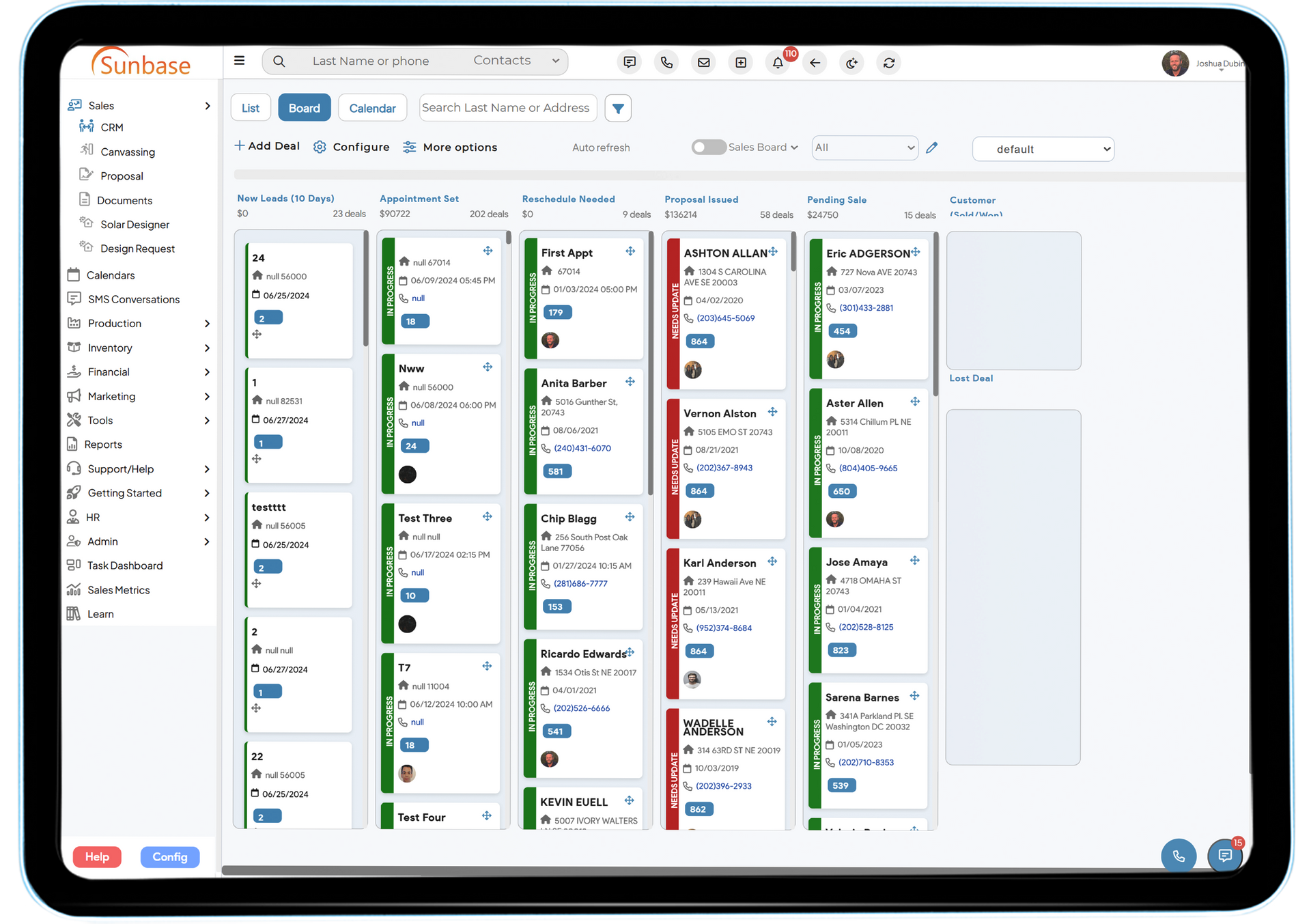Marketing & Sales Software
Effortlessly manage leads, automate communications, and
boost sales with
Sunbase Marketing and Sales Software

Streamline Your Marketing and Sales with
Powerful All-in-One Software
Customer Relationship Management
Stay Connected, Stay Organized
Capture, organize, and manage important prospect and customer details so it’s accessible anytime, from any device. Enhance your customer relationships with streamlined access to all critical information, ensuring you never miss an opportunity to close a deal.
Drip Campaigns & Email/Text Blast
Automate Your Outreach
Build automated multi-touch email and text campaigns. Reach your entire database effortlessly with personalized, targeted messages that keep your prospects engaged and moving through the sales funnel.
Calendars & Scheduling
Simplify Your Scheduling
Coordinate meetings with ease and filter calendar views based on user, territory, or appointment type. Ensure your team stays organized and on track, maximizing productivity and minimizing scheduling conflicts.
Sales Boards with Aging Triggers
Visualize Your Sales Pipeline
Track sales records visually using the customizable sales board. Organize deals by stage, set aging triggers, and automate follow-ups to ensure no opportunity slips through the cracks.
Commission Management
Ensure Timely PaymentsRun commission reports and track draws due on sold projects to ensure sales reps are paid timely. Simplify commission management, boosting rep satisfaction and motivation.
Lead Capture, Scoring & Assign
Optimize Your Lead Management
Push leads directly into the CRM from providers, Facebook, Google, and company-generated sources. Score and assign leads efficiently to the right reps, ensuring a quick and effective follow-up.
Optimize Efficiency and Precision with Sunbase's
Marketing & Sales Management Software
Harness enhanced operational efficiency and precision with Sunbase's advanced tools. Gain real-time insights into campaign effectiveness, enabling continuous improvement of strategies and maximizing returns. Empower decision-making with detailed analytics and reports, facilitating informed decisions for targeted customer engagement and resource allocation.
Streamline your sales pipeline with intuitive lead management capabilities, minimizing leakage and driving higher conversion rates. Simplify workflows with seamless integration across marketing channels, ensuring cohesive data management and operational synergy. Explore the impactful benefits of Sunbase's integrated marketing and sales management software, designed to propel your business forward.
Enhanced Efficiency
Our marketing and sales management software streamlines processes, automating tasks like campaign tracking, lead nurturing, and performance reporting. This reduces manual efforts and errors, saving time and resources for your team.
Improved Accuracy
Real-time analytics and automated data insights ensure accurate performance tracking and customer engagement metrics, enhancing decision-making and optimizing marketing strategies effectively.
Cost Savings
By optimizing marketing spend and maximizing ROI through targeted campaigns and efficient resource allocation, our software helps minimize costs and improve overall marketing budget management.
Better Decision Making
Detailed analytics and reporting features provide valuable insights into campaign effectiveness, customer behavior trends, and sales performance, empowering businesses to make data-driven decisions and optimize marketing efforts.
Customer Satisfaction
With streamlined lead management and personalized customer engagement strategies, businesses can meet customer needs promptly, enhancing satisfaction levels and fostering long-term relationships.
Compliance & Security
Our software ensures compliance with data protection regulations and enhances the security of customer information through robust data management and encryption protocols, safeguarding your business reputation and customer trust.

